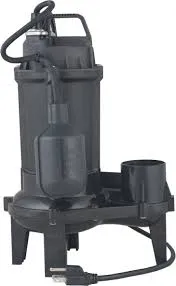Albanian
- Afrikaans
- Albanian
- Amharic
- Arabic
- Armenian
- Azerbaijani
- Basque
- Belarusian
- Bengali
- Bosnian
- Bulgarian
- Catalan
- Cebuano
- Corsican
- Croatian
- Czech
- Danish
- Dutch
- English
- Esperanto
- Estonian
- Finnish
- French
- Frisian
- Galician
- Georgian
- German
- Greek
- Gujarati
- Haitian Creole
- hausa
- hawaiian
- Hebrew
- Hindi
- Miao
- Hungarian
- Icelandic
- igbo
- Indonesian
- irish
- Italian
- Japanese
- Javanese
- Kannada
- kazakh
- Khmer
- Rwandese
- Korean
- Kurdish
- Kyrgyz
- Lao
- Latin
- Latvian
- Lithuanian
- Luxembourgish
- Macedonian
- Malgashi
- Malay
- Malayalam
- Maltese
- Maori
- Marathi
- Mongolian
- Myanmar
- Nepali
- Norwegian
- Norwegian
- Occitan
- Pashto
- Persian
- Polish
- Portuguese
- Punjabi
- Romanian
- Russian
- Samoan
- Scottish Gaelic
- Serbian
- Sesotho
- Shona
- Sindhi
- Sinhala
- Slovak
- Slovenian
- Somali
- Spanish
- Sundanese
- Swahili
- Swedish
- Tagalog
- Tajik
- Tamil
- Tatar
- Telugu
- Thai
- Turkish
- Turkmen
- Ukrainian
- Urdu
- Uighur
- Uzbek
- Vietnamese
- Welsh
- Bantu
- Yiddish
- Yoruba
- Zulu
Telephone: +86 13120555503
Email: frank@cypump.com
Dhj . 25, 2024 14:25 Back to list
Selecting the Most Efficient Slurry Pump for Optimal Performance and Reliability
The Best Slurry Pump A Comprehensive Guide
When it comes to industrial applications, particularly in sectors such as mining, construction, and wastewater management, the efficiency of slurry handling is crucial. Slurry, a mixture of solids and liquids, can be challenging to transport due to its viscosity and the nature of the particles involved. This is where slurry pumps come into play. Selecting the best slurry pump for your needs can significantly enhance operational efficiency and reduce maintenance costs.
What is a Slurry Pump?
A slurry pump is specifically designed to handle abrasive and corrosive slurry. Unlike standard water pumps, these pumps are engineered to manage thick liquid mixtures containing solid particles. They come in various designs and materials, enabling them to operate effectively across different industrial applications. Slurry pumps can be classified based on their construction—centrifugal, peristaltic, diaphragm, and screw pumps are among the most common types.
Key Features to Consider
1. Material Construction The durability of a slurry pump largely depends on the materials used in its construction. High Chrome alloys, rubber linings, and stainless steel are common materials that ensure the pump withstands the wear and tear from abrasive particles. Choosing the right material is essential, as it directly influences the pump's lifespan and maintenance needs.
2. Flow Rate and Head Understanding the flow rate and head is essential for selecting the right slurry pump. Flow rate indicates the volume of slurry the pump can move within a specific time frame, while head refers to the height to which the pump can raise the slurry. Both parameters must align with the specific requirements of your application to prevent inefficiencies.
3. Suction Capability Efficient slurry handling also depends on the pump’s ability to create sufficient suction. A pump designed with a strong suction capacity can draw in the slurry without generating excess turbulence, which can separate solids from the liquid and lead to uneven flow.
4. Maintenance and Serviceability The design of the slurry pump can affect how easily it can be maintained. Pumps that feature convenient access for cleaning and repairs will reduce downtime and long-term costs. Look for models that require minimal disassembly for routine maintenance tasks.
best slurry pump

5. Seal and Gasket Quality Because slurry applications often involve harsh chemicals and corrosive environments, the seals and gaskets of a slurry pump must be of high quality. Poor seals can lead to leaks, which not only waste resources but also pose safety risks.
Best Practices for Slurry Pump Operation
1. Regular Monitoring Implementing a routine inspection schedule can help identify potential issues before they escalate. Monitoring wear parts such as impellers and liners can save time and money on repairs.
2. Proper Installation Ensure that the pump is installed according to the manufacturer’s specifications. Misalignment or improper mounting can lead to premature wear and catastrophic failures.
3. Optimize Slurry Properties If possible, try to optimize the properties of the slurry being pumped. For example, reducing particle size or adjusting the concentration can significantly enhance pump efficiency.
4. Train Staff Proper training of personnel operating and maintaining slurry pumps can lead to improved performance and longevity of the equipment.
Conclusion
Selecting the best slurry pump is a critical investment in your industrial operation. By considering the key features—such as material construction, flow rate, suction capability, maintenance ease, and seal quality—you can find a pump that meets your specific needs. Regular monitoring and proper operation will further ensure the longevity and efficiency of the pump. Ultimately, a well-chosen slurry pump will not only enhance productivity but also provide significant cost savings in the long run.
-
Horizontal Split Case Pump with GPT-4 Turbo | High Efficiency
NewsAug.01,2025
-
ISG Series Pipeline Pump - Chi Yuan Pumps | High Efficiency, Durable Design
NewsAug.01,2025
-
Advanced Flue Gas Desulfurization Pump with GPT-4 Turbo | Durable & Efficient
NewsJul.31,2025
-
ISG Series Vertical Pipeline Pump - Chi Yuan Pumps | Advanced Hydraulic Design&Durable Construction
NewsJul.31,2025
-
ISG Series Vertical Pipeline Pump - Chi Yuan Pumps | Energy Efficient & Low Noise
NewsJul.31,2025
-
pipeline pump - Chi Yuan Pumps Co., LTD.|High Efficiency&Low Noise
NewsJul.31,2025










